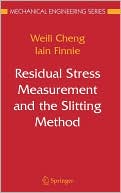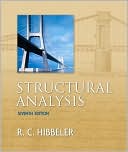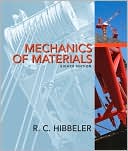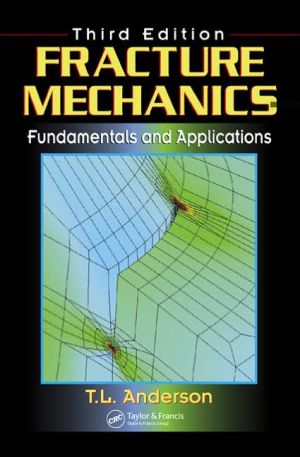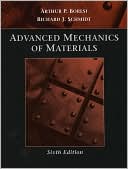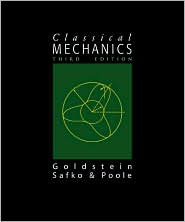Residual Stress Measurement and the Slitting Method
Search in google:
Residual Stress Measurement and the Slitting Method provides complete coverage of the slitting method with new results in analysis, computation and estimation. It discusses different roles of residual stresses from the fracture mechanics perspective. Covering both near-surface and through-thickness residual stress measurements, the book serves as a reference tool for graduate students, researchers and practicing engineers. The authors include discussions on the general expressions for residual stresses acting on the site of a slit, the analysis based on fracture mechanics solutions and finite element computations, the estimations using continuous and piecewise functions with and without least squares fit, examples of residual stress measurement and error analysis, the measurement of stress intensity factors, and many more timely topics.With more than 130 figures, Residual Stress Measurement and the Slitting Method provides detailed formulations and examples of compliance functions, weighted least squares fit and convergence test in stress estimation, and computer programs to facilitate the implementation of the slitting method. This book is an invaluable reference for professionals and researchers in the field.
Introduction to Residual Stresses 1What are residual stresses? 1Influence of Residual Stresses 2Mechanical Methods for Residual Stress Measurement 4About This Book 7Elements of Measurement Using the Slitting Method 9Linear Elasticity and Superposition Principle 9Expressions for Approximation of Residual Stresses 11Experimental Procedures 17The Body Force Approach for Near-Surface Measurement 19Introduction 19Analysis 20Results 25Comparison of Cuts with Circular Bottom and Flat Bottom 29Discussion 30The LEFM Approach for Through-Thickness Measurement 33Introduction 33An Edge-Cracked Beam 33Normal Stress on Crack Faces 33Shear Stresses on Crack Faces 40An Edge-Cracked Circular Body 42A Thin-Walled Cylinder With a Circumferential Crack 45A Ring With a Radial Crack 49Discussion 51The FEM Approach for Through-Thickness Measurement 53Introduction 53General Consideration in Finite Element Mesh 53Typical Geometries Analyzed by the FEM 59An Edge-Crack at a T-Joint Weld or a Fillet Weld 59A Slot of Finite Width in a Thin Specimen 61The Use of 2-D FEM for 3-D Problems 64Discussion 68Estimation of Residual Stresses 69Introduction 69Approximation Using a Power Series 73Least Squares Fit for Stress Estimation 73Properties of Compliance Matrices 75Approximation Using Polynomial Series 76Series for Through/Partial-Through-Thickness Measurement 78Weighted LSF for Through-Thickness Measurement 80Approximation Using Strip-Loads 82Error Analysis 84Discussion 87Overlapping-Piecewise Functions for Near-Surface Measurement 88Influence of Error on Overlapping-Piecewise Functions 93Configurations Analyzed by the Compliance Method 98Conclusion 102Measurement of Through-Thickness Residual Stress 103Introduction 103A Case Study: Through-Thickness Residual Stress in a Beam 103Dominant Variation in Stress Estimation 108Error in Through-Thickness Measurement 111Conclusion 115Measurement of Axisymmetric Residual Stresses 117Measurement Using Two Axial Cuts 117Introduction 117Analysis of Axisymmetric Residual Stresses in Plane Strain 118Determination of the Axial Residual Stress in a Water-Quenched Cylinder 121Discussion 122The Single-Slice Approach for Axisymmetric Stresses 122Introduction 122Estimation of the Axial Residual Stress 123The Choice of the Functions S[subscript i](r) 126Determination of the Hoop and Radial Stresses in Plane Strain 127Plane Strain and the Choice of the Slice Thickness 128An Additional Experimental Feature 130Experimental Validation 131Discussion 133Estimation Using Initial Strains 135Introduction 135Initial Strain Approach for the Crack Compliance Method: Axial Stress in a Beam 138Initial Strains Approach for the Single-Slice Method: Axial Stress in a Rod 140Experimental Validation 143Application: Residual Stress in a Pyrolytic Carbon Coated Graphite Leaflet 146Discussion 151Residual Stresses and Fracture Mechanics 153Introduction 153Influence of Residual Stress on Fracture Strength of Glass 153Surface Compressive Residual Stresses and Surface Flaw Detection 155Measurement of Stress Intensity Factors Using the Slitting Method 159Discussion 163K[subscript I] and K[subscript II] Solutions for an Edge-Cracked Beam 165An Expression for K[subscript I] 165An Expression for K[subscript II] 166Stresses Due to Point Forces 167C Subroutines for the Calculation of Polynomial Series 169Chebyshev Polynomials 169Legendre Polynomials 172Jacobi Polynomials 174K[subscript I] Solution for an Edge-Cracked Disk 177Analysis 177Results 180Stress Variation With the Location of the Virtual Forces on a Disk 183Nonuniform Strain over a Gage Length 185C++ Programs for the Calculation of Eq. (10.24) 189PointF Class Header - Listing of PointF.h 189Code for Class Definition - Listing of PointF.cpp 190Sample Code for Usage of Class PointF 194References 197Index 205
